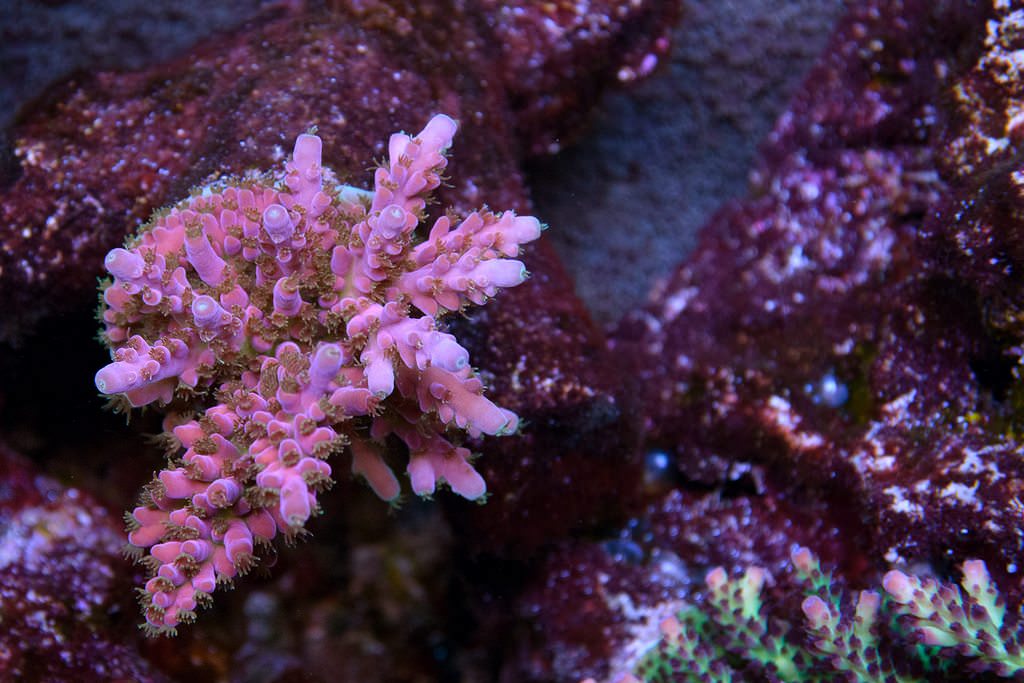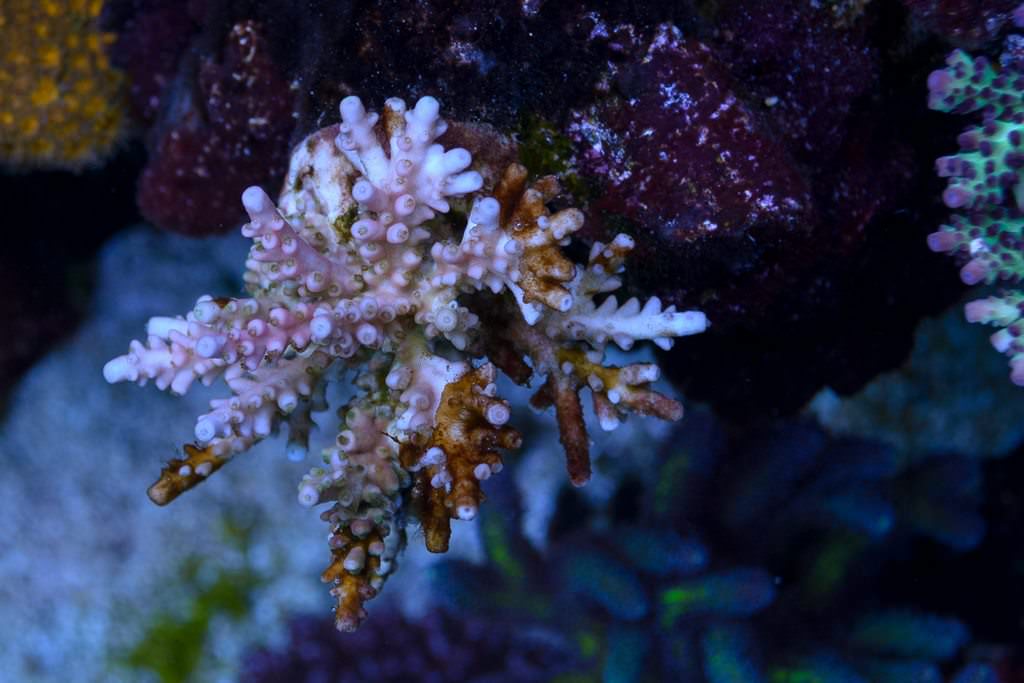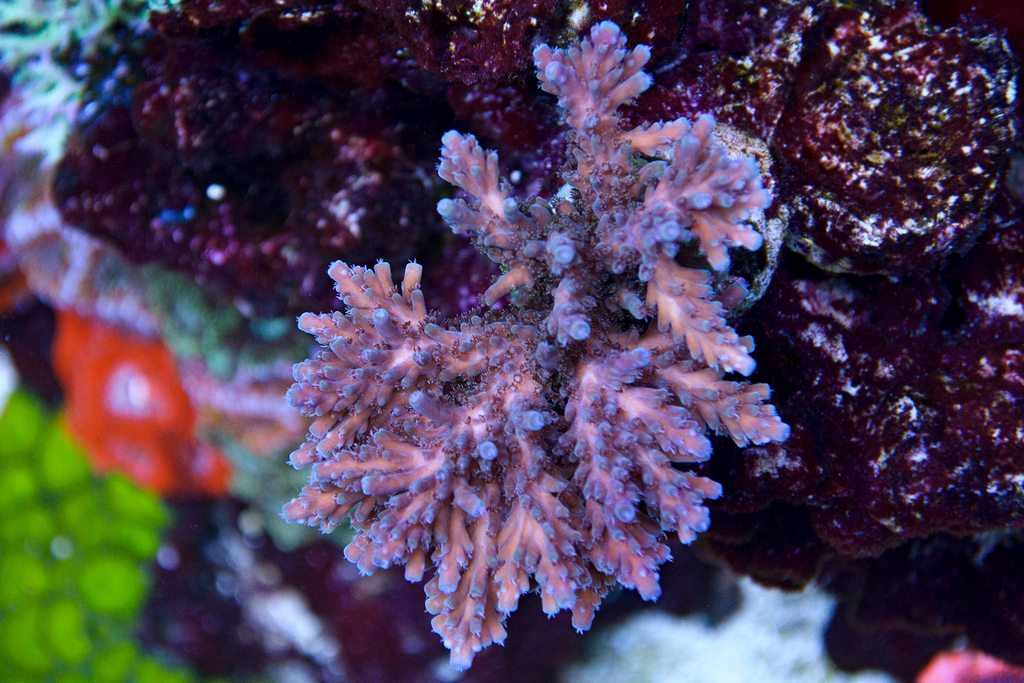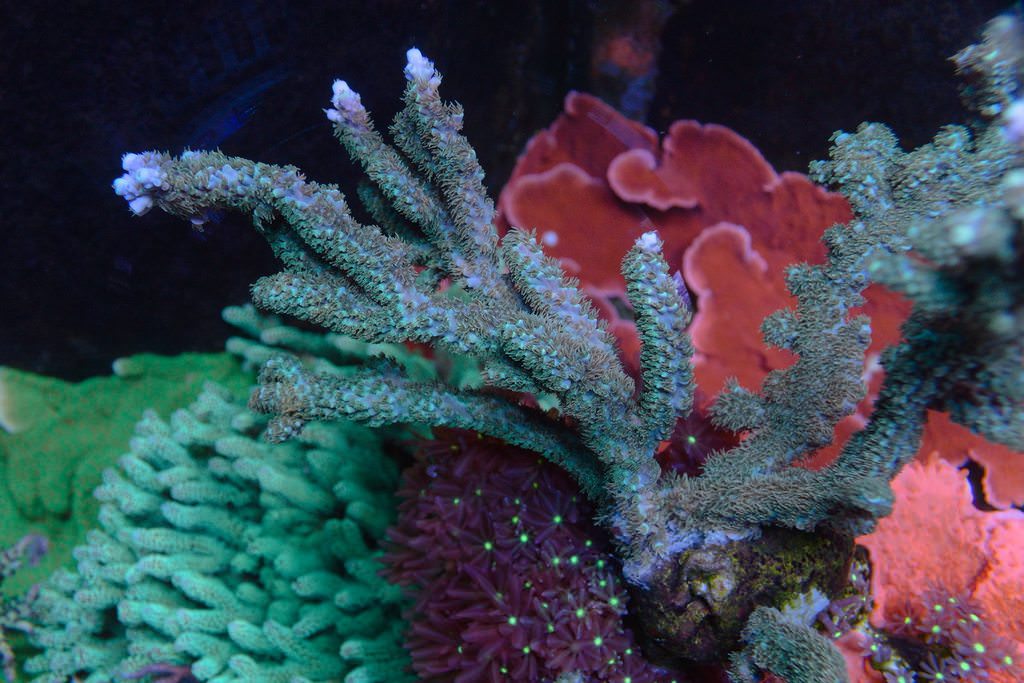- Joined
- Apr 8, 2018
- Messages
- 3
- Reaction score
- 0
QUESTION: What is the trick to acclimating wild caught acros?
I’ve recently had the opportunity to acquire a few Frags of Aussie wild caught acros. The first 2 Frags lived for about a month then within days bleached and died. At one point they both had polyp extension and looked really good. Then they lost color, shed their skin, and died within days. I started them out low in the tank and gradually tried to bring it up but to no avail. I have other aqua-cultured acros in the tank that are perfect. They have polyp extension and everything.
Alk-8.7
cal-470 (maybe a little high)
mag-1350
salinity-1.024
nitrate phosphate-0 (maybe too low)
ph-8.2
TIA
P.S. this is one of my non-wild caught acros:
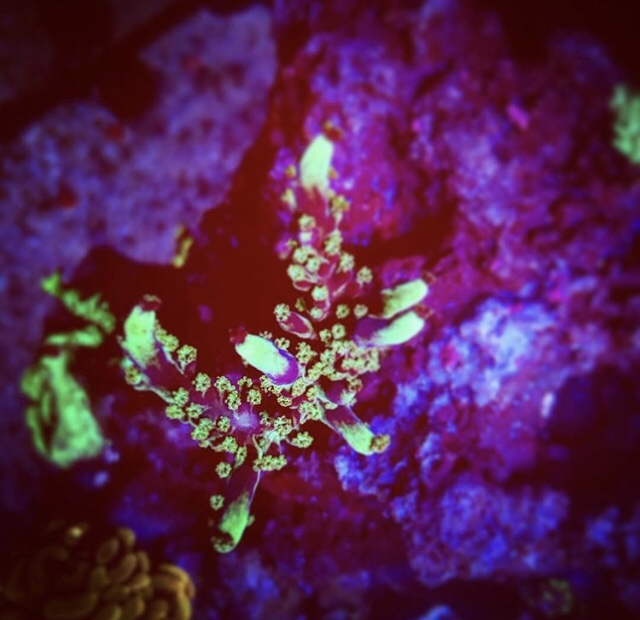
I’ve recently had the opportunity to acquire a few Frags of Aussie wild caught acros. The first 2 Frags lived for about a month then within days bleached and died. At one point they both had polyp extension and looked really good. Then they lost color, shed their skin, and died within days. I started them out low in the tank and gradually tried to bring it up but to no avail. I have other aqua-cultured acros in the tank that are perfect. They have polyp extension and everything.
Alk-8.7
cal-470 (maybe a little high)
mag-1350
salinity-1.024
nitrate phosphate-0 (maybe too low)
ph-8.2
TIA
P.S. this is one of my non-wild caught acros:

Last edited:






